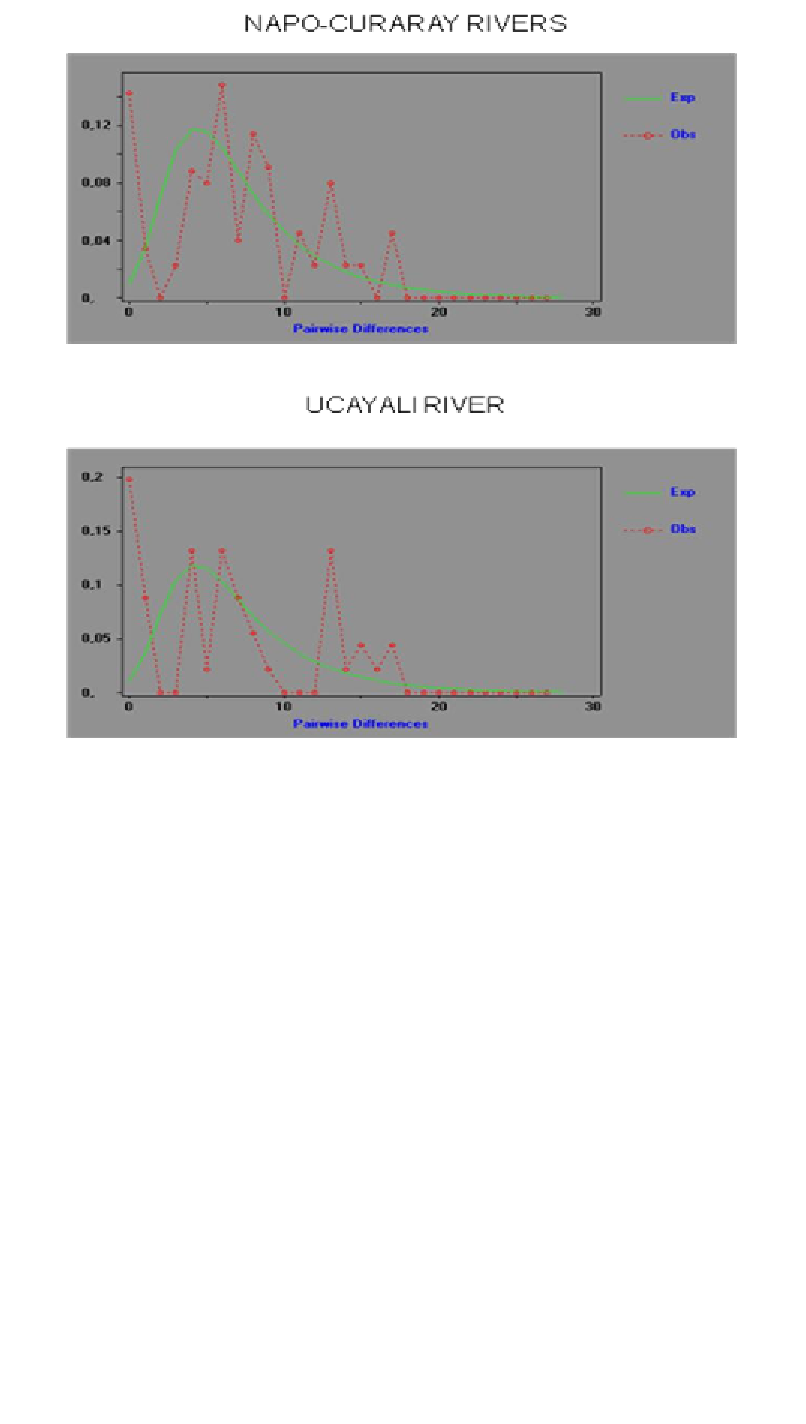Biology Reference
In-Depth Information
Figure 1. The mismatch distribution (pairwise sequence differences) at the mtDNA control region for
the pink river dolphins of the Upper Amazon, Mamoré River (Bolivia), Marañón, Napo-Curaray and
Ucayali rivers (Perú). Only the upper Amazon sample showed a clear population expansion.
The analysis of the haplotype network with the median-joining procedure showed that
some Amazonian haplotypes were originals while the haplotypes, found in Bolivia and the
Orinoco, were derived (Figure 2). This haplotype network has a star-like form which agrees
quite well with a population expansion. Henceforth, some noteworthy different results were
obtained between the microsatellites (nuclear DNA) and the control region gene
(mitochondrial DNA). However, the separation time between the mitochondrial haplotypes
from the Amazon, Bolivia and Orinoco, as well as inside the Amazon and the Bolivian
populations, agrees quite well with some aspects obtained in the microsatellite analyses: all
these expansion and colonization processes were relatively recent. The D-loop time
separation between the main Amazon haplotype and the main Bolivian haplotype was about
163,800
+
7,450 years ago ( = 8.116
+
0.369). Within the Amazon, the time split between
the two main haplotypes was 22,700
+
3,800 years ago ( = 1.125
+
0.187) and within
Bolivia, the temporal separation between the two main haplotypes was 4,850
+
4,850 years
ago ( = 0.24
+
0.24). This last result is in agreement with tests performed by Zhivotovsky et

Search WWH ::

Custom Search